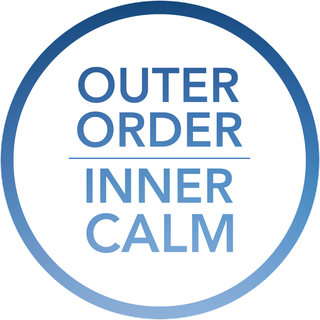How to Create an Office Space at Home—Away from Your Partner or Kids

Gretchen Rubin is the bestselling author of several books, such as Outer Order, Inner Calm and The Happiness Project, about how to be happier, healthier, and more productive, and she hosts the Happier with Gretchen Rubin podcast. For OprahMag.com, Gretchen is weighing in on how we can all find a little bit of calm, even during a pandemic.
Because of the COVID-19 pandemic, many people who don't usually work remotely have suddenly found themselves working from home for the foreseeable future. If you’re one of those people who isn't accustomed to it—or even if you are!—you might find it difficult to focus and be productive when life and work are mixed together.

This situation can be particularly tough if you live in a smaller place. I myself live in New York City, where space is tight. But regardless of geographic location, people everywhere are having to use a lot of imagination to create workable home spaces in households that may include other working adults or children who are also home.
How can you create a work space if you're simultaneously using the dining room table as a desk? What happens when your laptop gets covered by your children's homework? And how can you find a quiet spot to take conference calls when your partner is shouting into the phone just across the room? Believe it or not, with a little planning, I've seen that it is possible to create separate areas for work and personal life, even in a small space.
Try these tips:
Clear your clutter! Having some elbow room will make your space both more flexible, and more inviting. Here’s the test as you consider various items: Ask yourself, “Do I need it? Do I use it? Do I love it?” If not? Get rid of it. Clear out any unpacked boxes, overstuffed shelves, drawers that won’t easily open and close, or items piled on the floor, on a counter, or under a desk. For most people, as I like to say, outer order contributes to inner calm.
Search for for an underused space to see if it might be repurposed to make your work or home life easier. Could a closet become a privacy phone booth? A friend had a basement storage room with a low six-foot ceiling that made it hard to use for most purposes, but it was exactly the right amount of square footage for a yoga and meditation room.
Take ten minutes to tidy up. Every time you’re ready to head from your “work space” to “home space,” or vice versa, it's important to organize a bit. Nothing fancy: Store your pens in the pen cup, return documents to their folders, clear away trash, put away dirty dishes, and items of clothing. In just 1- minutes, you can create a lot of outer order, and this small effort will keep your space more livable. For most people, it’s draining to spend all day and night in a mess. Bonus: These ten minutes of physical effort will help you to make the mental transition from work time to home life. For many people, a commute provides a buffer between the different parts of life, and now that you don’t have that travel time, this exercise might help make that transition less jarring.
Keep some personal areas off-limits while you work. I have a friend who lives in a studio apartment, and he never allows himself even to sit on his bed during the work day. Or maybe you want to keep the kitchen off-limits except for lunch, or after the work day is over, you might shut your laptop and stay away from your work desk until the next morning. Physical limits can help us set mental limits.
Take the time to set up your work space properly. It’s inefficient and discouraging to work in an area that feels makeshift and temporary. If you try to work on your laptop at the kitchen table, it’s going to be hard to focus, and work and life will be too mixed together. Even if it doesn’t look like a traditional “office,” creating a dedicated work area that’s outfitted with whatever tools you need—a good light, a phone headset, scratch pads, stapler, etc.—will put you in a work frame of mind. Add a few touches like a plant or a framed photo, and the space will instantly be more appealing.
Our physical surroundings influence our mental and emotional states. By taking the time and energy to create a work space that’s comfortable, efficient, and inviting, we can help ourselves to do our best work with the most clarity and serenity.
For more ways to live your best life plus all things Oprah, sign up for our newsletter!
You Might Also Like

